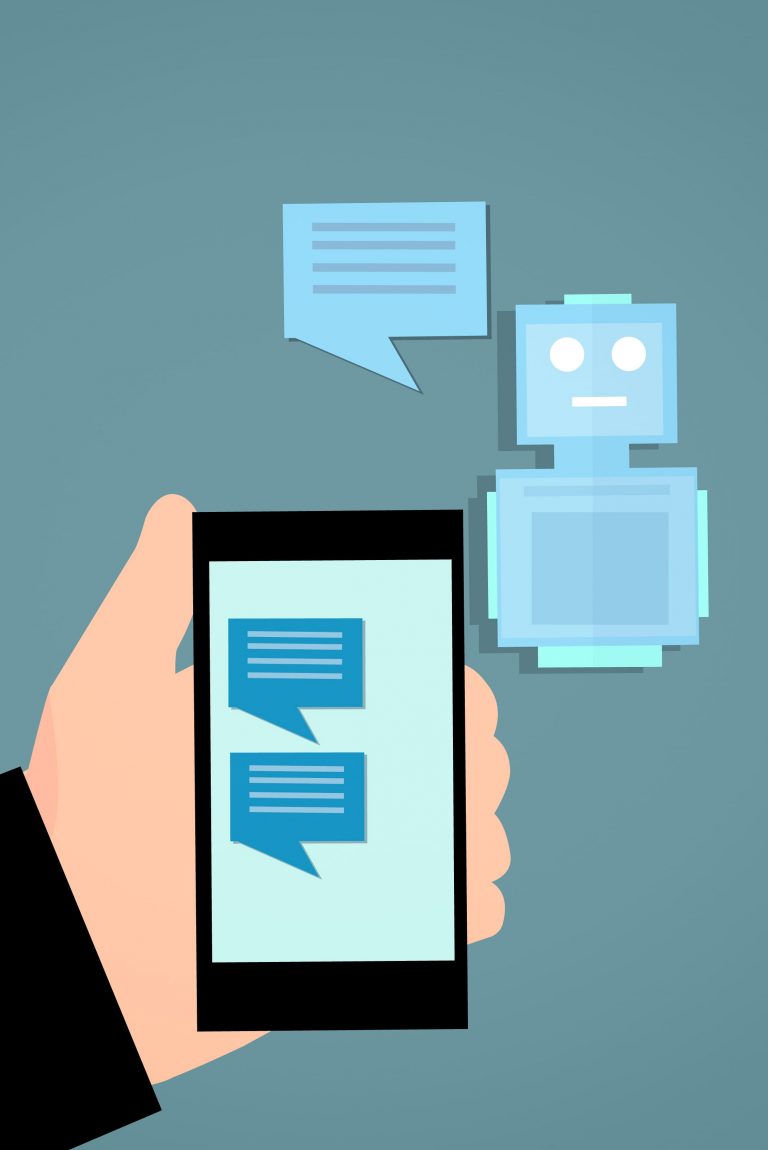Table of Contents:
- 1 What are bots?
- 2 What is the overall purpose of using bots?
- 3 Where and how do bots operate?
- 4 Types of bots around us
- 5 Good versus evil
- 6 Złośliwe boty
- 7 What signs could indicate that we are dealing with a malicious bot?
- 8 How to protect your computer from invasion by malicious bots?
- 9 Advantages and disadvantages of bots
Bots are among us. However, we have not moved in time, action and space to a world straight out of Star Wars, and it is not a quote from that production either – it is our most normal everyday life. In this article, we present modern types of bots along with their exemplary functions and a division into good and bad bots taking into account their characteristics.
What are bots?
Bot is the abbreviated name for robot, but nowadays it mainly refers to an Internet bot, i.e. a computer program that acts as an assistant to a user who is an individual or another program, or simulates human activity. Bots are usually used to automate certain processes, which means that they can function independently without human intervention in real time.
What is the overall purpose of using bots?
A bot can be used by an organisation, a company or an individual human. The main purpose of using bots is to replace humans in performing tasks that they can do but are repetitive. Bots are characterised by a much higher performance than humans. However, apart from ‘good’ bots, which are designed to perform good and useful tasks, there are also ‘bad’ bots, which can e.g. take the form of malware designed to harm someone.
Where and how do bots operate?
Typically, bots operate in the area of computer networks. Communication between bots takes place via web services, which include applications and websites that enable instant messaging. According to a study conducted in 2021 by Barracuda, about 66% of the activities performed on the Internet are the work of bots! Each bot is actually a set of algorithms according to which they perform a specific range of designated tasks.
Examples of bot tasks include talking to individuals – such bots collect data from content posted on relevant websites and send a suitably worded reply to the correspondent on the other side. More advanced bots, on the other hand, use artificial intelligence and machine learning and make use of natural language generation and processing algorithms.
By analysing the response from the human, the bot can learn new phrases and words, with real-time translation into the language the human speaking to the bot is writing in. Companies, as well as individuals using bots, can also use dedicated bot management software to help manage and protect them from malicious bots. Such software can also be part of a web application security platform.

For example, the bot manager may allow the use of tested bots and block the use of those bots suspected of causing system damage or other undesirable effects. For this purpose, the bot manager classifies all incoming requests from human and good bots, as well as known malicious and unknown bots. Any suspicious bot traffic is then directed away from the site by the specific bot manager. Some basic bot management feature sets include IP rate limiting and CAPTCHA control. IP rate limiting limits the number of requests coming from the same IP address, while CAPTCHA provides the resulting data that helps distinguish bots from humans.
Types of bots around us
There are many types of bots, the functionality of which strictly depends on their end use. Some of the most popular modern bots include:
- Chatbots – a chatbot is a program that can simulate a conversation with a real human. One of the first and most famous chatbots before the advent and spread of the internet, was a bot called Eliza. Developed in 1966 at Massachusetts Polytechnic University, Eliza’s research project had NLP technology implemented, which involves natural language processing. The Eliza chatbot emulated a psychotherapist and answered patients’ questions with other questions. Contemporary examples of chatbots include voice assistants, which include Amazon Alexa and Google Assistant.
- Social media bots – often considered opinionated tools that influence the direction of discussions between users on social media platforms;
- Shopping bots – most bots of this type shop online and find shops where the product of interest to the user has the best price. Some shopping bots, such as Shopify’s chatbot, enable Shopify shop owners to automate marketing and customer service;
- Knowbots – the purpose of these bots is to gather knowledge for the user by automatically visiting websites to retrieve information that meets specific criteria. Knowbots were originally used as a computerised assistant that performed redundant tasks;
- Crawlerbots – these bots, also known as web robots, access websites and automatically index data in search engines such as Google and Bing;
- Monitoring bots – these bots can be used to monitor the health of a website or system;
- Transaction bots – these bots aim to simplify tasks that would otherwise be performed by a human talking on the phone. Examples of these services include reserving a stolen or lost payment card, or providing customer service to a mobile phone network.

Bots can be used in many areas of customer service, as well as in areas such as business, planning, search functionality and entertainment. Bots in each area offer different benefits. For example, customer service bots are available 24/7 and thus relieve the burden on customer service staff by increasing their availability. Such bots are also called virtual representatives or virtual agents and enable actual ‘human’ agents to focus on more complex tasks where there is an increased risk that artificial intelligence might fail.
Other services that use bots include:
- Instant messaging for text, voice and video chat;
- News apps for displaying news stories;
- Apps for exploring, listening to and buying music;
- Apps for arranging transportation of people and things;
- Meeting planning services;
- Customer service applications that use chatbots to fulfil customer requests and explore customer experiences.
Good versus evil
There are two sides to every medal – this can also be applied to bots. In short, bots can be divided into good ones and bad ones. Bots that are considered good by definition include tasks such as customer service, generating news, world news and headlines along with relevant article content, bots that measure customer acquisition statistics, bots that check the correct operation of various systems, and bots that acquire information necessary for proper website positioning. However, there are also bots that are deliberately designed to do damage – here is an example of evil genius!

Złośliwe boty
Malicious bots are used to automate activities that are considered cybercrimes. The most common types of malicious bots include:
- DDoS – they overload servers and prevent the service from working;
- Spambots – publish promotional content to attract traffic to a specific site and assist hackers who spread malware, attack websites and collect sensitive information such as financial data or login details for social media accounts;
- Keyloggers – track the characters typed by the user on the keyboard to steal passwords and logins;
- Brute-force data decryption and password cracking bots;
- Spyware to collect email addresses, which can also be used to send messages from these addresses without the knowledge of the authorised holder.
What signs could indicate that we are dealing with a malicious bot?
There are several signs indicating that a system is infected by malicious bots. These include
- Frequent , “hanging” applications and computer crashes for no known reason;
- Sending e-mail or instant messaging chat messages to user’s contacts without his knowledge;
- Longer application load times;
An unreasonable decrease in internet connection speed; - Spam messages appearing, even when not using the Internet;
- Frequent change of cooling fan speed, even with negligible CPU load;
- Change of settings in the system without user’s consent and without possibility to undo the changes from administrator level;
- Web browser contains features or add-ons that the user has not installed;
- Computer takes a long time to shut down or restart;
- The computer does not shut down or restart;
- Activity Monitor shows that programs you did not install are running in the background;
- Warnings appear on your computer that if you do not click on a link, your computer will be infected with a virus – do not click under any circumstances!
How to protect your computer from invasion by malicious bots?

The best defence against malicious bots is to implement preventative measures. By following the right cyber security practices, we can increase our effectiveness in preventing bot infections. Such practices include:
- Installing antimalware software – Malicious bots, in addition to computer viruses, are also categorized as malware. Anti-malware software can help automate your computer’s protection against such threats;
- Installing a bot manager – a bot manager is usually part of a web application security platform. They classify network requests and allow certain bots, while blocking those bots that the manager deems undesirable;
- IP rate restriction limit the number of requests for the same address;
- CAPTCHAs use puzzles to verify that the requesting user is a human and not a bot.
- Firewall – can be configured to block bots and prevent specific traffic based on IP address or behaviour from the bot;
- Regular software updates – these include security updates that can help protect against malicious bots;
- A strong login password – bots can be used to brute-force attacks on weaker passwords and hack into user accounts. Having a strong password and changing it frequently can prevent this.
- Bots can send spam or malicious links via email. Therefore, only click on links from trusted sources to avoid receiving a dangerous link from a malicious bot.
Advantages and disadvantages of bots
There are many advantages to using bots, but there are also disadvantages, such as the risks that other bots can pose. Some potential advantages of bots are:
- Higher efficiency over individuals when performing repetitive tasks;
- Saving customers time;
- 24-hour availability throughout the week;
- Configurability;
- Increased online reach.
In contrast, the disadvantages of bots can include:
- Limited ability to perform certain non-standard tasks and higher risk of misunderstanding physical users;
- The need for human supervision and interference with the bot’s work in case of misinterpretation by the other party;
- Bots can prove malicious to users and be used for cybercrimes.
How useful was this post?
Click on a star to rate it!
Average rating 0 / 5. Vote count: 0
No votes so far! Be the first to rate this post.



















